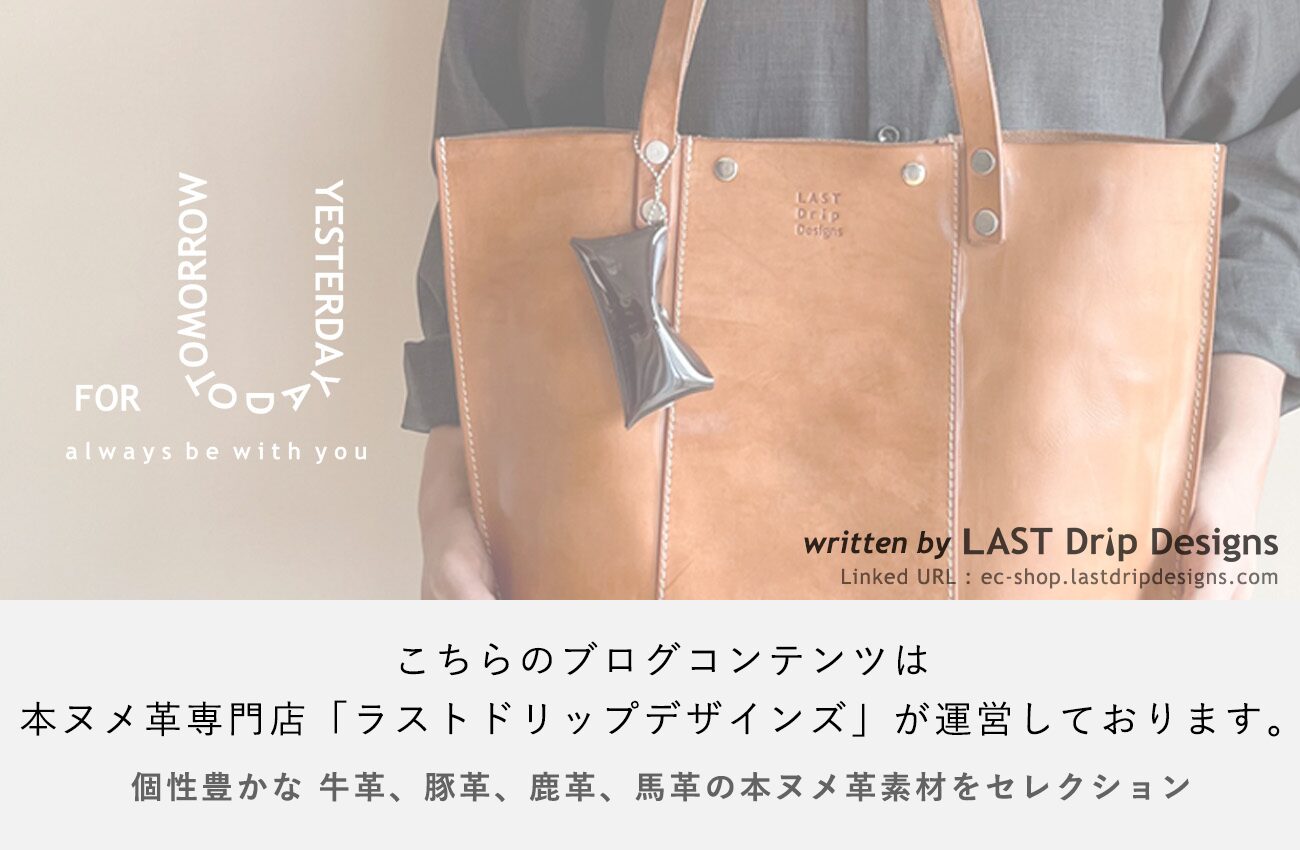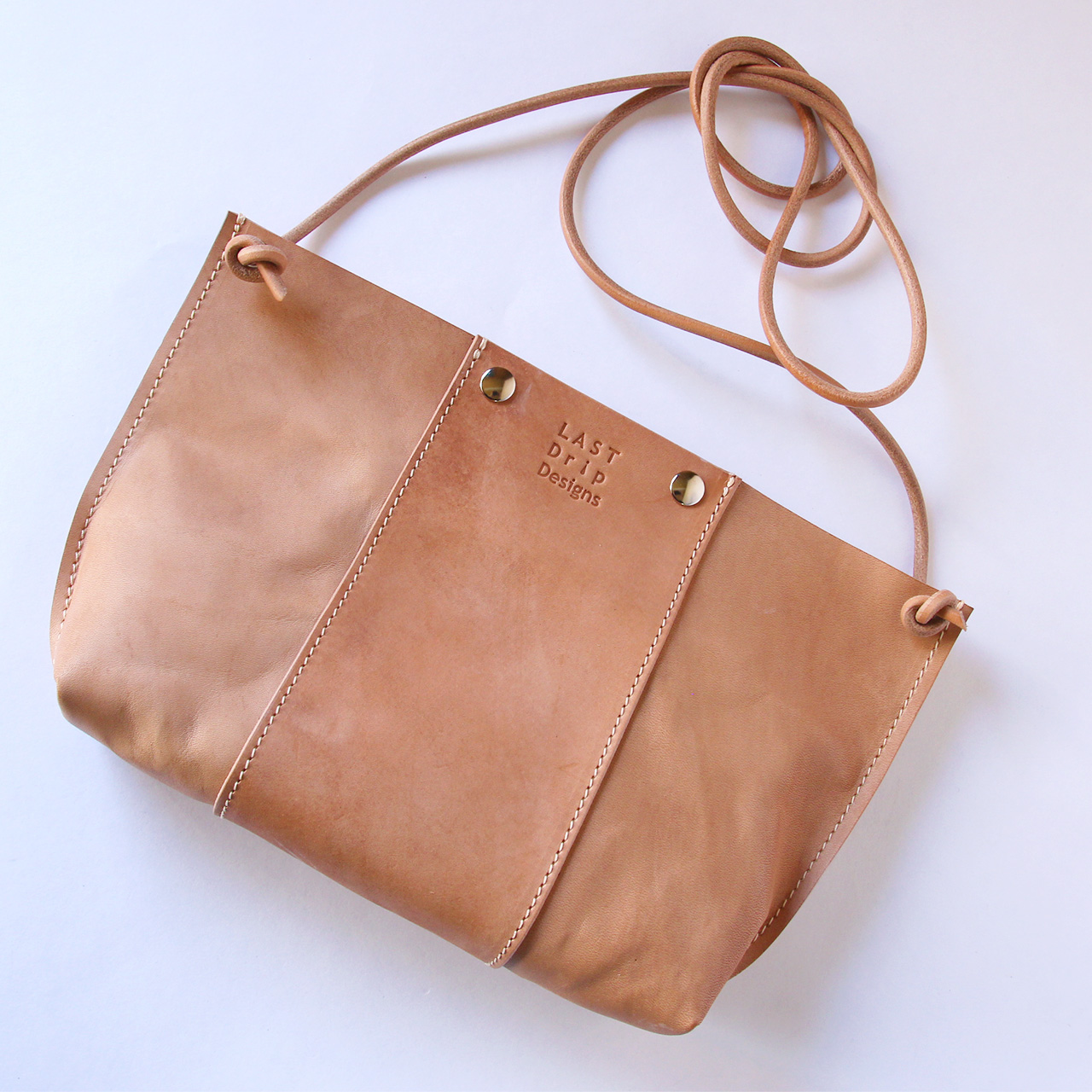
Linked : ec-shop.lastdripdesigns.com
What is the appeal of high-quality Japanese leather products? | English
Article source: Last Drip Designs Official Online Store
A store specializing in genuine tanned leather bags, wallets, key cases, and accessories.

Japanese leather products have garnered global acclaim, thanks not only to their aesthetic appeal but also due to the rich heritage of craftsmanship that underpins their creation.
In this exploration, we will delve into the intricate world of high-quality Japanese leather, where traditional techniques meet unparalleled durability. Readers will uncover how centuries-old methods contribute to the uniqueness of each piece, reflecting the dedication of artisans who have honed their skills over generations.
Additionally, we will highlight specific examples of exceptional leather, such as Tochigi Leather, known for its remarkable richness and character.
The discussion will also touch upon the environmental considerations and sustainability practices adopted by Japanese tanners, showcasing a commitment to ethical production without compromising quality. By examining these facets, readers will gain insights into why Japanese leather products are not just items of luxury, but a thoughtful investment in craftsmanship that respects both tradition and the planet.
This article promises to enlighten those curious about the essence of Japanese leather and its profound appeal in today’s market.
The appeal of Japanese leather products
Japanese leather products have gained international recognition for their unique blend of beauty, functionality, and craftsmanship. They are not simply items for everyday use; they represent a cultural heritage that is rich in tradition and artistry.
The appeal of Japanese leather lies primarily in its excellence in craftsmanship that has been honed over centuries, as well as in the innovative approaches that Japanese artisans have incorporated into the production process.
This article explores two essential aspects that contribute to the allure of Japanese leather products: traditional techniques and craftsmanship, and the innate qualities that ensure their durability and longevity.
Traditional techniques and craftsmanship
The roots of Japanese leather craftsmanship can be traced back to centuries ago when techniques were influenced by the country’s historical trade with other cultures. The art of leather making in Japan is characterized by meticulous attention to detail and an unwavering commitment to quality.
Craftsmen employ traditional methods such as hand-stitching and dyeing, which have been passed down through generations. These time-tested techniques are often coupled with a deep respect for the natural characteristics of leather.
One of the most noted traditional techniques is “bark tanning,” where the tanners utilize natural tannins extracted from the bark of trees. This method not only results in leather that possesses a distinctive aesthetic but also ensures that it is environmentally sustainable.
The traditional approach emphasizes a slower production process, which allows artisans to create leather products that are not only durable but also unique in texture and color.
Each piece is crafted with great care, making every item a manifestation of the artisan’s dedication to their craft. This attention to detail results in products of remarkable quality, ensuring that they stand out in the crowded global market.
The secret to quality and durability
The secret to the quality and durability of Japanese leather products lies in the selection and treatment of the raw materials used.
Japanese tanners are renowned for sourcing high-quality hides, which are integral to producing superior leather. The hides are often vegetable-tanned, allowing them to breathe and develop a patina that improves with age, adding character over time.
Moreover, Japanese artisans have mastered the art of finishing leather in a way that enhances not just its appearance but also its strength. Techniques such as burnishing and edge coating create a smooth, refined surface that resists wear and tear.
This meticulous finishing process also ensures that each product can withstand the rigors of daily use without compromising its aesthetics.
Another element contributing to the durability of these leather products is the emphasis on functionality. Japanese designers prioritize the needs of users, resulting in well-thought-out designs that incorporate practicality with style.
For instance, wallets or bags are crafted with compartments and closures that maximize usability while also showcasing the beauty of the leather.
Ultimately, the combination of traditional craftsmanship, high-quality materials, and a focus on functionality leads to Japanese leather products that are not only visually appealing but also practical and long-lasting.
Their enduring nature ensures that they can be enjoyed for years, making them an investment worth considering for anyone who appreciates fine craftsmanship.
Superior Leather Made by Japanese Tanners
Japanese leather has gained international acclaim for its exceptional quality, craftsmanship, and unique characteristics. Among the various types of leather produced in Japan, two aspects stand out: the remarkable Tochigi leather and the increasing focus on environmental sustainability in the leather tanning industry.
This article delves into the wonders of Japanese leather, particularly shining a light on Tochigi leather and the commitment to environmentally friendly practices by tanners.
Representative Leather | Tochigi Leather
Tochigi leather is celebrated as one of the finest leather types in Japan. Originating from Tochigi Prefecture, this leather is renowned for its natural and organic tanning process that maintains the perfect balance between durability and aesthetics.
The region’s tanners use traditional techniques passed down through generations, exemplifying the art of leather crafting that has distinguished Japanese leather products.
One of the defining characteristics of Tochigi leather is its rich, vibrant color and the unique texture that develops over time. This leather is primarily made from cowhide, carefully selected for its grain and quality.
The tanning process involves natural vegetable tannins, a method that is both eco-friendly and contributes to the overall beauty of the final product. As a result, Tochigi leather develops a beautiful patina, enhancing its visual appeal with age and use.
Moreover, Tochigi leather is extremely versatile, making it a preferred choice for a variety of products such as wallets, bags, belts, and other accessories.
This adaptability does not compromise its inherent toughness, as Tochigi leather is known for its resistance to wear and tear, ensuring that items crafted from it can withstand the rigors of daily use while maintaining their charm.
Environmental Considerations and Sustainability
In recent years, the global shift towards sustainability has significantly impacted the leather industry, and Japan is no exception.
The country’s tanneries have recognized the importance of adopting environmentally friendly practices to minimize their ecological footprint. From the tanning process to the final product, there is a concerted effort to prioritize sustainability.
The use of natural vegetable tanning methods, as seen in Tochigi leather production, is a prime example of this commitment. Unlike synthetic tanning agents that can be harmful to the environment, vegetable tanning utilizes plant-based materials and does not introduce hazardous chemicals into the ecosystem.
This approach significantly reduces water pollution and ensures the safety of surrounding flora and fauna.
Furthermore, many Japanese tanneries are taking steps to improve their energy use and waste management practices. By incorporating renewable energy sources, reducing water consumption, and implementing recycling programs, these tanneries strive for a more sustainable production model.
This aligns with the growing consumer demand for ethically produced goods, where consumers are increasingly conscious of the environmental impact of their purchases.
Additionally, the cultural emphasis on craftsmanship in Japan plays a crucial role in this sustainability narrative. Every piece of leather is treated with care and respect by artisans, ensuring that it lasts. This philosophy advocates for quality over quantity, encouraging consumers to invest in products that are not only beautiful but also durable and sustainable.
In conclusion, Japanese leather, particularly Tochigi leather, highlights the incredible balance of tradition, craftsmanship, and modern sustainability efforts.
As consumers continue to seek products that are both stylish and eco-friendly, the commitment of Japanese tanners to uphold these values will undoubtedly position them as leaders in the leather industry, ensuring that their practices not only celebrate the rich heritage of their craft but also protect the environment for future generations.
Views: 243
ラストドリップデザインズでは、「魅力溢れる本物志向の素材」にフォーカスしハンドクラフトの温かみ溢れる作品が多数展開されています。インターネットショップ限定での展開のため、ここでしか出会えないプロダクトばかり。是非、ご覧頂けますと幸いです。
ラストドリップデザインズ 公式通販
名入れギフト対応|国内配送料0円(弊社負担)
おまとめ特典|お買い上げ2点以上で割引特典あり
会員登録|永久不滅ポイントサービス
前の記事へ
次の記事へ


